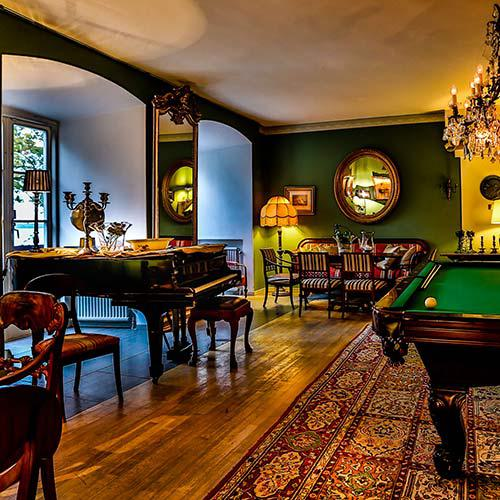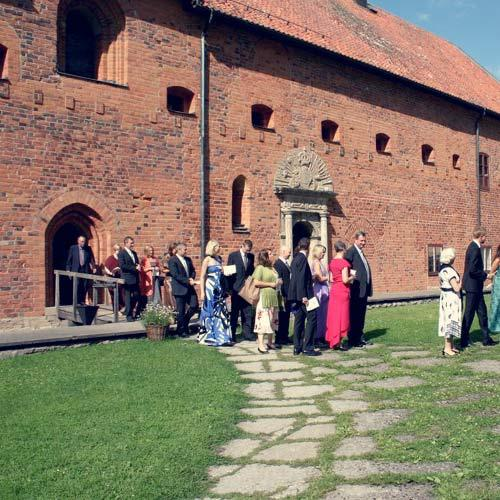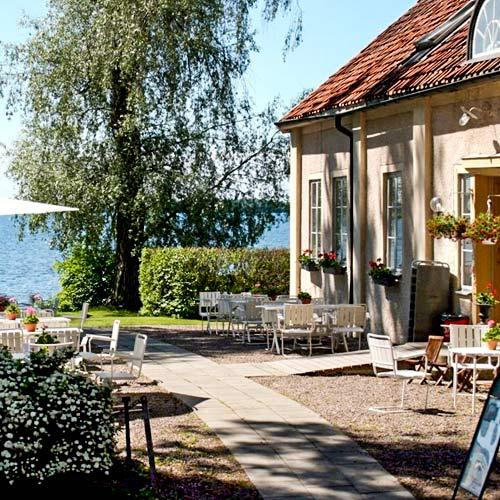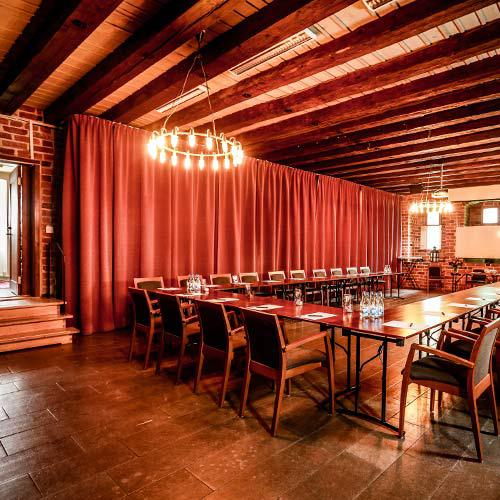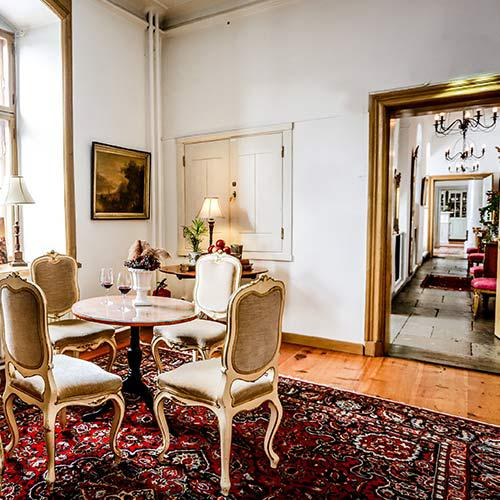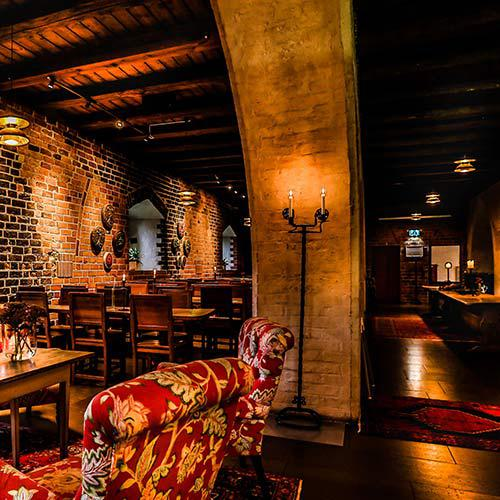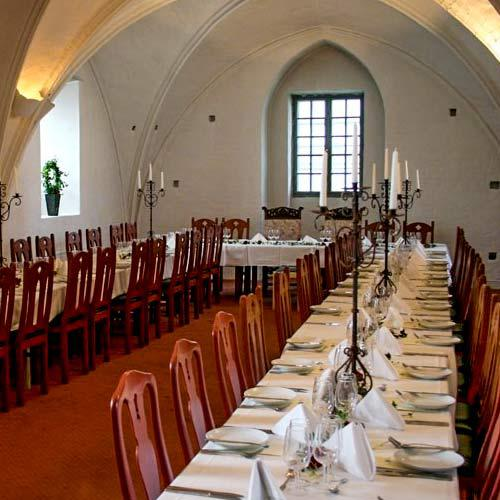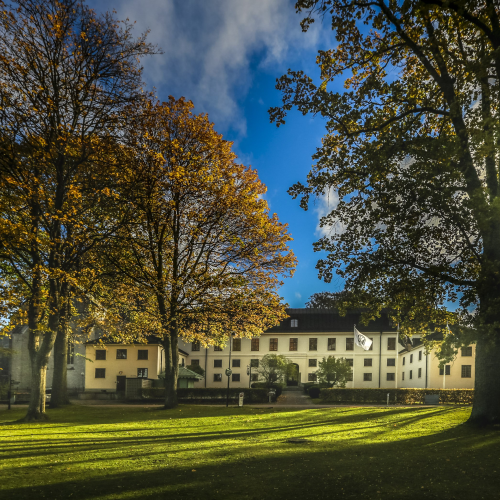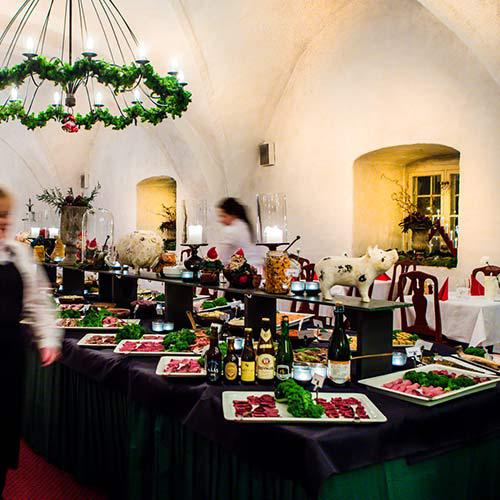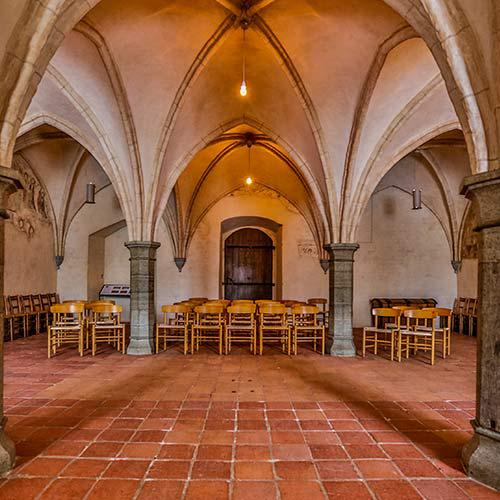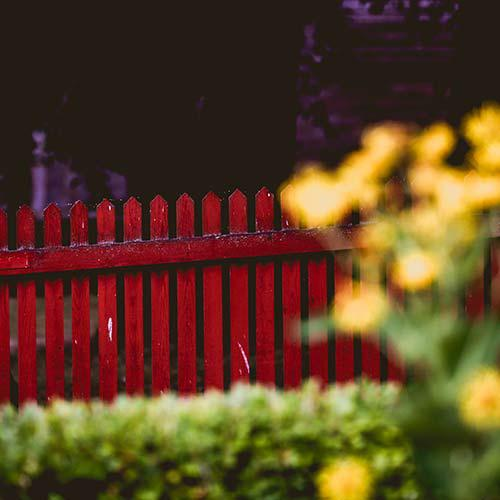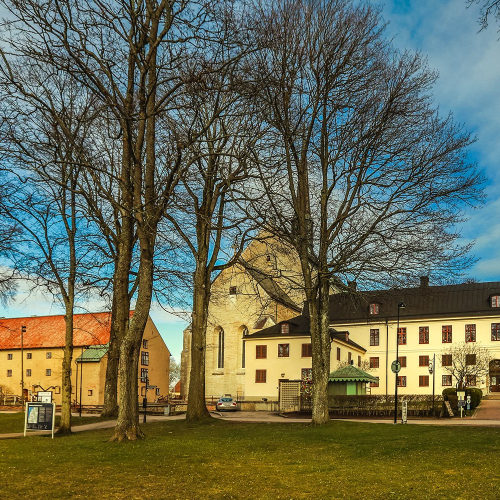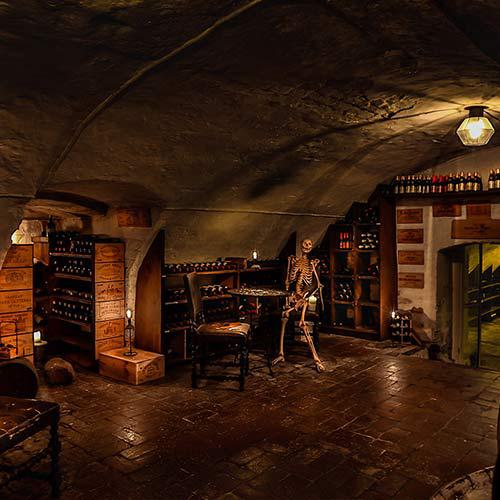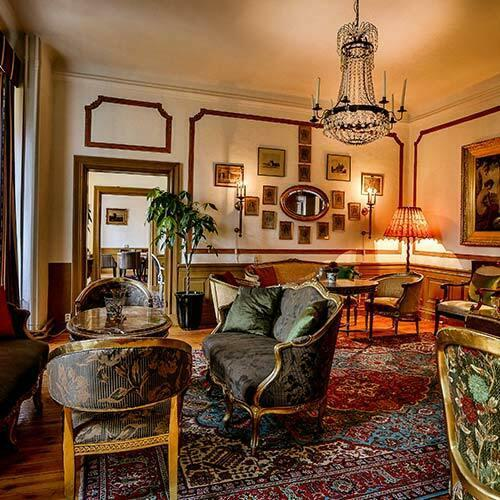
The 18th century apartment
The only building that remains from the former monastery is the house in which the Restaurant Munkklostret now operates. During the monastic period from 1384 onwards, the house was only one storey high. In the middle of the 17th century, the house was put to a new use when Vadstena Krigsmanshus was established.
The Warrior's House was a kind of retirement home for returning wounded soldiers. In the 1760s, the house was rebuilt with a second floor - what we call the 18th century floor (10), according to drawings by the superintendent C. J. Cronstedt. The house then got the exterior you can see today with an intermediate blind floor towards the entrance side. The monastery's building was mainly used for the staff of the War House. The inmates of the war men's house, the gratifiers, lived in the west wing of the nunnery (today's hotel building). Today there are conference rooms and lounges with a bar in the 18th century floor.

